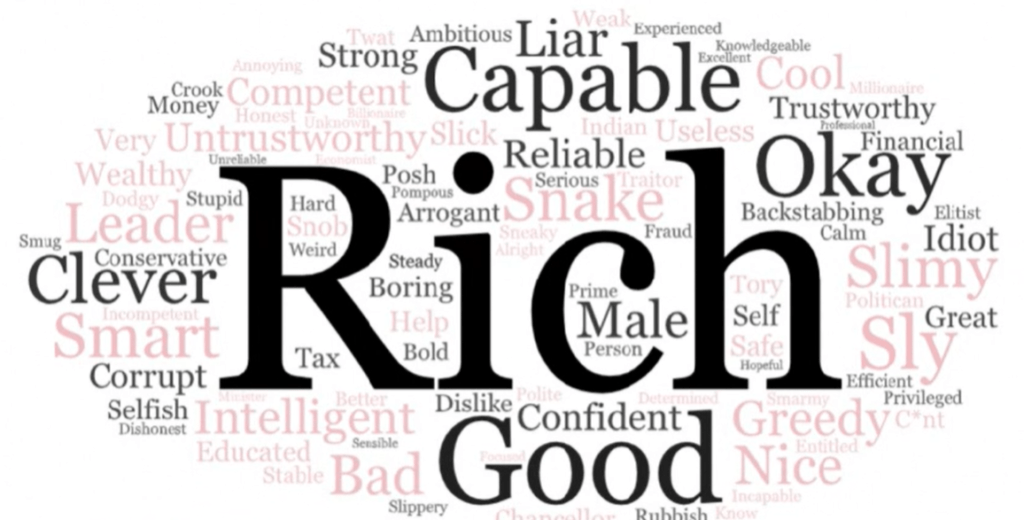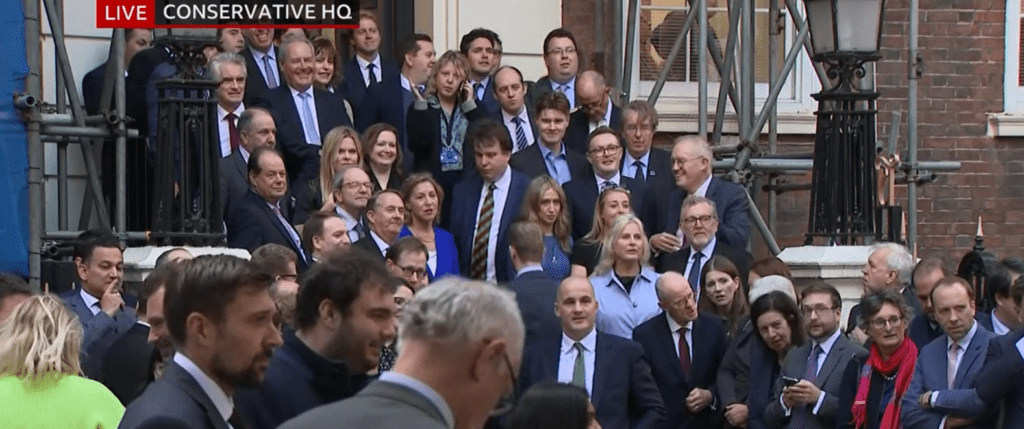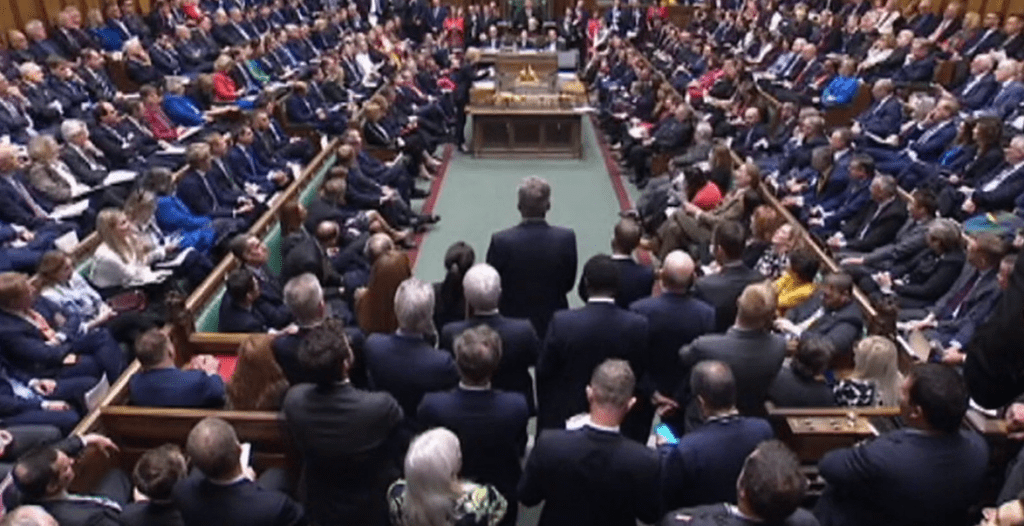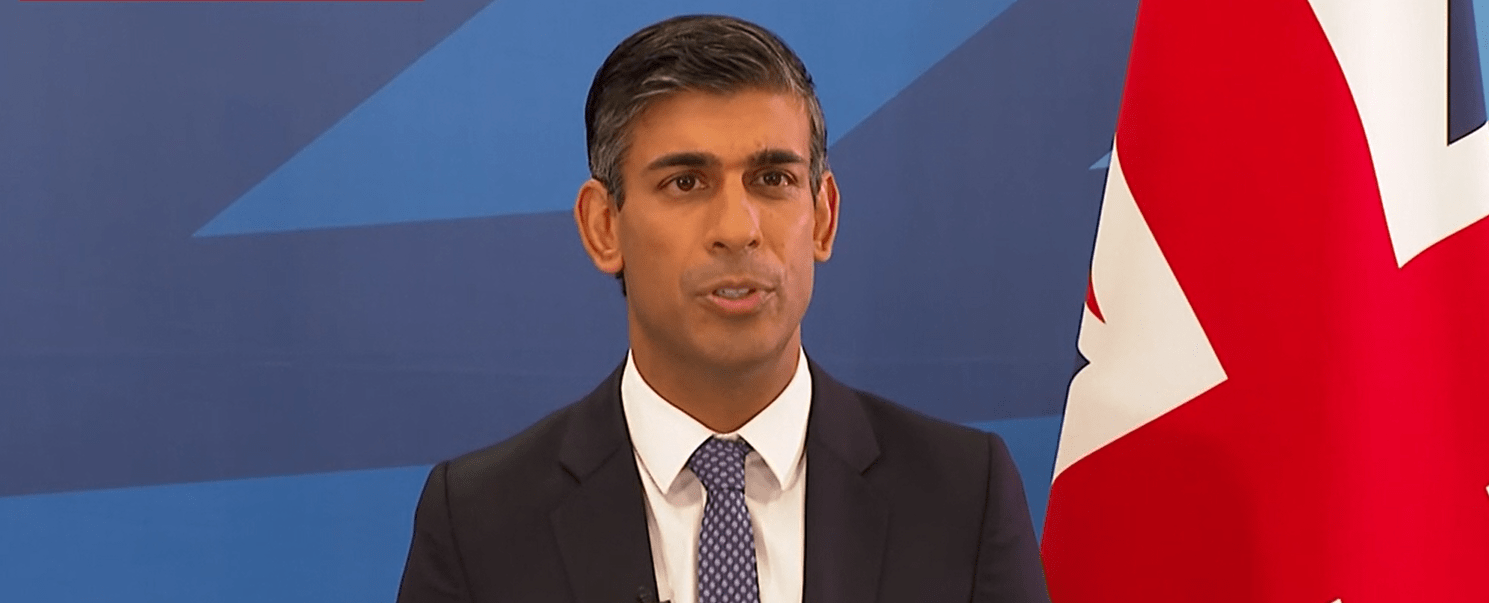The records continue to crumble. After the shortest period in office for both a chancellor and prime minister, we have the youngest prime minister in modern history and the very first of Asian heritage. But the most important thing we should know about Rishi Sunak is that he is personally the richest MP in the House of Commons.
This is also the first time in history that the residents of Ten Downing Street are richer than the residents in Buckingham Palace. According to the Sunday Times Rich List, the late Queen was worth a mere £370mn, but Rishi and his wife, Akshata Murty, are together worth a cool £730mn. They have at least three homes in Britain, as well as a $6mn property in Santa Monica, California.
Earlier this year, Akshata Murty was found to have been dodging substantial UK taxes by registering as a “non-domicile”. This scandal emerged at the same time that it was discovered that Sunak was keeping his options open by holding a US ‘green card’, making him eligible to live and work there.
Since that news broke, Sunak claims to have handed back the green card and Murty has relinquished her non-dom status. But neither of those things would have happened without the public stink. It is no surprise that the public perception of Sunak is of a man of fabulous wealth, as shown by the ‘word cloud’ published by the BBC. (see below).
Word Cloud dominated by RICH
Sunak’s list of government ministers purports to be a cabinet of ‘all the talents’ – which is not saying a lot, given the character of the Tory party – but it is really an attempt to appease all wings of the party, after a period when it appeared to be ‘ungovernable’. Sunak may have left out a few of Boris Johnson’s and Liz Truss’s cronies, but his cabinet is well represented by the head-bangers of the extreme Tory right, such as Suella Braverman, as Home Secretary.

Braverman is an unwavering advocate of the hard right, with, among other things, a visceral hatred of migrants. The refugees’ desperate need to find a safe haven away from war, oppression and economic hardship means nothing to Braverman, and she would happily pick up the appalling policy of wholesale expulsion of migrants to Rwanda.
Although Sunak has reintroduced the moratorium on fracking, his, cabinet will continue with an already-agreed policy of pumping out oil and gas – a hundred new exploration licenses have been given out – and is likely to ditch environmental protections and water down zero-carbon commitments.
Heavy hints about a new bout of austerity
Sunak’s coronation as PM is an attempt to return to financial orthodoxy, after the failure of so-called “Trussonomics”. As an article in the Financial Times (October 21) put it, “Truss’s resignation marked a defining moment in the tumultuous era of post-Brexit British politics, the death of the dream held by the Conservative right of turning the country, freed from the bureaucratic grip of Brussels, into a free-market nirvana”.
Given that the turmoil in the bond markets have abated slightly, Sunak may have a longer honeymoon period than Liz Truss. But it will still be relatively short-lived, as he faces significant challenges in the coming months, the greatest of which is the dire economic position of British capitalism.
He has already dropped heavy hints about austerity measures and “difficult decisions to come”. The Chancellor, Jeremy Hunt, announced what he called “eye-wateringly difficult” plans, the details of which are now postponed to mid-November, but it will almost certainly include big cuts and belt-tightening every bit as fierce as George Osborne’s in 2010, if not worse.
It is possible that Hunt may introduce modest windfall taxes on banks and even energy companies – taking some of the wind out of Starmer’s sails– but they will be modest alongside other measures, no more than a fig-leaf on which to inscribe the lie that “we’re all making sacrifices”. Banks and energy companies will still get away with the lion’s share of their profiteering.
Deepest cuts in living standards for generations
But on the other hand, there will be millions real victims who will suffer from the Hunt/Sunak economies. Workers are facing the deepest cuts in their living standards for generations, with all of the key necessities like food, housing and energy having cost rises well above the official CPI rate of 10%. There will be no respite for the working poor, those on such low wages that they rely on welfare and food banks. Desperately trying to keep their heads above water, Hunt and Sunak will be dragging them further down.
Those services provided by the public sector, upon which working class people depend, are already cut to the bone. The NHS is on its knees, with staff shortages, low pay and poor morale. According to the headteachers’ union, 90% of schools are going to run out of money next year. Yet these very services will suffer from the austerity that will be announced in November. Public sector pay, already fifteen to twenty percent behind in real terms what it was twelve years ago, will be squeezed more.

Not one of these services are used by Tory MPs and most certainly not by super-rich Sunak. They all use private health care, private schools and private networks to lavishly provide themselves with all the necessities of life. When he was Chancellor, Sunak was even caught on camera boasting about taking money away from poor inner city areas and redistributing it to the richer Tory Shires.
It will be among working people that Sunak will create many millions more victims: school children, pensioners, those waiting for medical treatment, young couples trying to find a home, ordinary families, poorly paid key workers.
Workers in struggle to defend living standards
The only means that workers have to defend their living standards are the trade unions. Millions of workers in many different industries, services and in transport have taken, or are planning to take industrial action, to demand pay rises that match cost of living increases. Although it is never reflected in the mainstream media or on the BBC, there is widespread public support for those trying to defend their living standards. Sunak will not find it easy to hold back these growing tides of protest.
In anticipation of workers fighting for decent wages, Liz Truss promised new anti-union legislation in her ‘first 30 days’ in office, new laws so drastic that they would have pushed trade union rights back to Victorian levels. That did not happen, but it is entirely possible that Sunak will follow Truss along that path.
Under Truss’s premiership, Home Secretary, Suella Braverman, was pushing a Public Order Bill through parliament and having the same job under Sunak, we can assume that she will continue with it. The bill is a draconian attack on the democratic right of protest, although (unsurprisingly) is has featured little in the mainstream press.
This is how George Monbiot, writing in the Guardian (October 19), described the implications of the Public Order Bill: “Even more sinister are the “serious disruption prevention orders” in the bill. Anyone who has taken part in a protest in England or Wales in the previous five years, whether or not they have been convicted of an offence, can be served with a two-year order forbidding them from attending further protests.
“Like prisoners on probation, they may be required to report to “a particular person at a particular place at … particular times on particular days”, “to remain at a particular place for particular periods” and to submit to wearing an electronic tag. They may not associate “with particular persons”, enter “particular areas” or use the internet to encourage other people to protest. If you break these terms, you face up to 51 weeks in prison”
This might mean, for example, that the Enough is Enough rallies that taken place in towns and cities around the country, if they are deemed “disruptive” (on account of noise, for example) could lead to court orders against organisers. It is difficult to know whether to cry or laugh at this…cry on account of how pre-Victorian it is in terms of democratic rights or laugh because much of it may be unenforceable. As an aside, it is a disgrace that the Labour front bench, instead of condemning this aspect of Suella Braverman’s politics, chose to criticise her appointment on secondary grounds.

The economic and political omens certainly don’t look like easy sailing for Sunak. Between the economic crisis, the return to austerity and the inevitable strikes and struggles that will follow, it is by no means certain that Sunak will hold the Tory party together. A few heavy defeats in parliamentary by-elections or massive losses in next May’s local election results will make Tory MPs restive again.
As a measure of how bitter is the divide that still exists among the Tories, on the day of Sunak’s coronation, the former Tory minister from the ‘one-Nation’ wing of the Tory party, Ken Clarke, tweeted that he had run into Suella Braverman in Westminster and that she had called him a “traitor”.
A third of the parliamentary party backed a candidate other than Sunak and as many as sixty backed the return of Boris Johnson. Johnson claimed, of course, a bare-faced liar to the end, that he had over 100 nominations, which he did not. It will not take a lot for the Jacob Rees-Mogg and the Nadine Dorries wing of the parliamentary party to begin to make life difficult for Sunak. According to the Guardian, Dorries, has already said that Sunak has “no mandate”, and she predicted he would find it “impossible” to avoid a snap general election.
Meantime, Sunak will attempt to steady the bond markets and hang on until 2024, in the hope that the Tories’ loss will be less drastic than the polls would seem to predict at the moment. He is also making sure that if Labour does come into office in 2014, he will hand them a poisoned chalice of economic chaos and tax rises.
“much of the pain will be felt after the next general election”
An article in the Financial Times (October FT Oct 24) suggested that the Sunak Hunt plan will include tax rises put off until the likely date of a Labour government: “His plan is likely to appeal to Sunak because much of the fiscal pain will not be felt until after the next general election: it will set out a fiscal consolidation that will aim to have debt falling as a share of gross domestic product in the fifth year.
“Among the proposals are sticking with a tight squeeze on public spending after the current Whitehall budget round ends in 2025 and extending a four-year freeze on personal income tax allowances and thresholds beyond 2025, according to government insiders”.
Where does that leave the Labour Party leadership under Starmer?…basically back to where it was under Johnson, bumbling along, unwilling to support workers in their justified struggle for decent wages and bearing down as hard as ever on the left of the party. Starmer’s personal poll ratings are far below those of his party, because Labour is seen by millions as the only realistic hope of change for the better, despite the leadership. Socialists will continue to argue in the Party and the broader labour movement for socialist measures as the only guarantee of real change in the interests of the working class.
For now, the probability of an early election has shifted somewhat towards being less likely. Sunak will be hoping that some economic ‘stability’ will take some of the shine off the huge lead Labour has in the polls. But we live in a period of great volatility and turbulence, in both politics and economics, and the surface calm of Sunak’s first week in office is no marker for the coming weeks and months.



